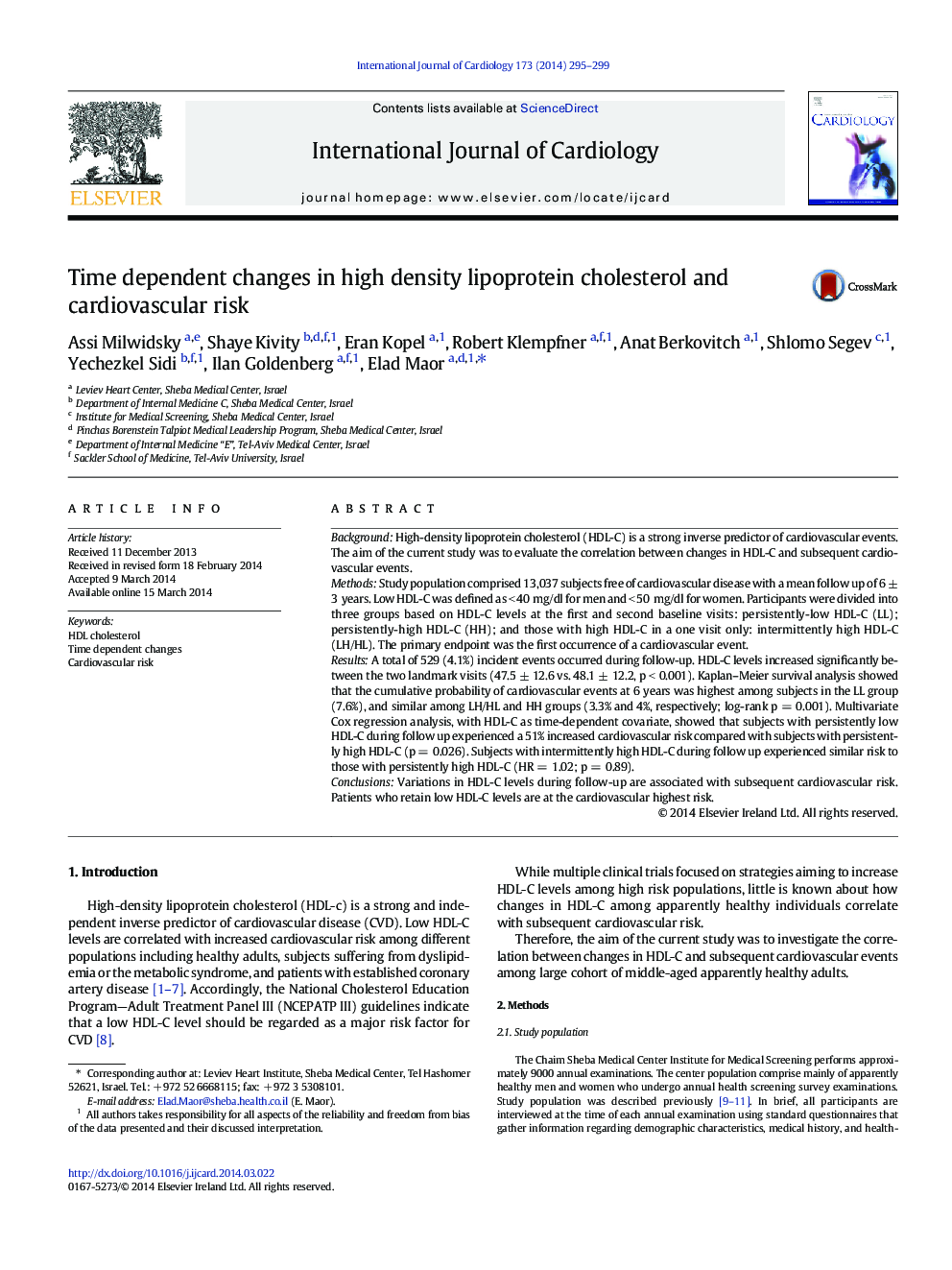| Article ID | Journal | Published Year | Pages | File Type |
|---|---|---|---|---|
| 5972275 | International Journal of Cardiology | 2014 | 5 Pages |
BackgroundHigh-density lipoprotein cholesterol (HDL-C) is a strong inverse predictor of cardiovascular events. The aim of the current study was to evaluate the correlation between changes in HDL-C and subsequent cardiovascular events.MethodsStudy population comprised 13,037 subjects free of cardiovascular disease with a mean follow up of 6 ± 3 years. Low HDL-C was defined as < 40 mg/dl for men and < 50 mg/dl for women. Participants were divided into three groups based on HDL-C levels at the first and second baseline visits: persistently-low HDL-C (LL); persistently-high HDL-C (HH); and those with high HDL-C in a one visit only: intermittently high HDL-C (LH/HL). The primary endpoint was the first occurrence of a cardiovascular event.ResultsA total of 529 (4.1%) incident events occurred during follow-up. HDL-C levels increased significantly between the two landmark visits (47.5 ± 12.6 vs. 48.1 ± 12.2, p < 0.001). Kaplan-Meier survival analysis showed that the cumulative probability of cardiovascular events at 6 years was highest among subjects in the LL group (7.6%), and similar among LH/HL and HH groups (3.3% and 4%, respectively; log-rank p = 0.001). Multivariate Cox regression analysis, with HDL-C as time-dependent covariate, showed that subjects with persistently low HDL-C during follow up experienced a 51% increased cardiovascular risk compared with subjects with persistently high HDL-C (p = 0.026). Subjects with intermittently high HDL-C during follow up experienced similar risk to those with persistently high HDL-C (HR = 1.02; p = 0.89).ConclusionsVariations in HDL-C levels during follow-up are associated with subsequent cardiovascular risk. Patients who retain low HDL-C levels are at the cardiovascular highest risk.
